1. Overview
Lester del Rey (June 2, 1915 - May 10, 1993) was a prominent American science fiction author and editor. Born Leonard Knapp in Minnesota, he is widely recognized for his prolific contributions to the genre, particularly during the Golden Age of Science Fiction, and for his pivotal role in science fiction publishing. Del Rey began his career writing for pulp magazines and later gained acclaim for his juvenile science fiction works and short stories like 'Helen O'Loy'. His literary style was noted for its focus on entertainment and principled characters. Beyond his writing, del Rey made a lasting impact as an editor, most notably by co-founding Del Rey Books with his wife, Judy-Lynn del Rey, which became a significant imprint for science fiction and fantasy. He was also known for his strong opinions on science fiction criticism, advocating for the genre's independence from mainstream literary evaluation. His work and influence earned him several prestigious accolades, including the Edward E. Smith Memorial Award and the Damon Knight Memorial Grand Master Award.
2. Biography
Lester del Rey's life involved significant achievements in the science fiction field, alongside intriguing personal background details and a notable career trajectory that spanned writing and editing.
2.1. Early Life and Real Name Controversy
Lester del Rey was born on June 2, 1915, in Minnesota. Despite his public persona and frequent claims, his real name was not Ramon Felipe Alvarez-del Rey, nor the more elaborate Ramon Felipe San Juan Mario Silvio Enrico Smith Heartcourt-Brace Sierra y Alvarez del Rey y de los Verdes, as he sometimes facetiously stated. His sister confirmed that his actual birth name was Leonard Knapp. Furthermore, del Rey fabricated a tragic backstory, claiming his entire family was killed in a car accident in 1935. In reality, the accident resulted only in the death of his first wife; his parents and siblings were not involved.
2.2. Writing Career
Del Rey began publishing stories in pulp magazines in the late 1930s, coinciding with the advent of the so-called Golden Age of Science Fiction. He quickly formed a strong association with Astounding Science Fiction, the era's leading science fiction magazine, under the editorship of John W. Campbell. Campbell published del Rey's first short story, "The Faithful," in the April 1938 issue. In December 1938, his celebrated story "Helen O'Loy" was featured in Astounding and later selected for the prestigious anthology The Science Fiction Hall of Fame. This story is considered a classic of robot fiction, notable for its humanistic and emotional portrayal of robots. By the end of 1939, he had also contributed stories to Weird Tales, edited by Farnsworth Wright, and Unknown, also edited by Campbell, which focused more on horror and fantasy respectively.
During a period when his literary works were not selling well, del Rey worked as a short order cook at the White Tower Restaurant in New York City. After marrying his second wife, Helen Schlaz, in 1945, he left this job to pursue writing full-time.
In the 1950s, del Rey emerged as a prominent author of juvenile science fiction, often mentioned alongside distinguished writers like Robert A. Heinlein and Andre Norton. His first three novels were published in the Winston Science Fiction juvenile series in 1952, one of which, Rocket Jockey, was also released in an Italian-language edition the same year. During this productive period, he utilized multiple pseudonyms for some of his fiction, including "Philip St. John" and "Erik van Lhin."
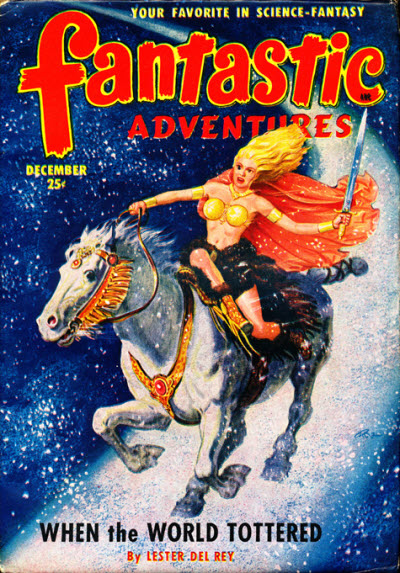
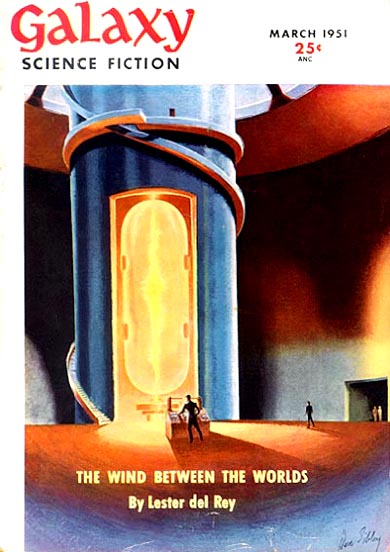
He maintained a rapid pace of publishing novels and short fiction throughout the 1950s and early 1960s, both under his primary pseudonym Lester del Rey and various other pen names. His novel writing began to slow down towards the end of the 1960s. His last novel, Weeping May Tarry, co-written with Raymond F. Jones, was published in 1978. Among his notable works as an author is the novel Nerves, which originated as a short story published in Astounding in 1942. This short story famously received 100% of reader votes, indicating its immense popularity, and was later expanded into a novel in 1956.
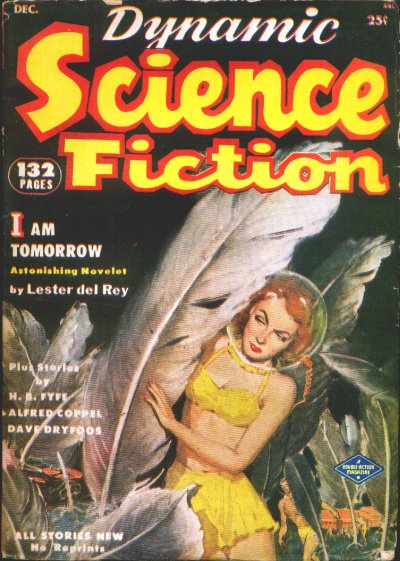
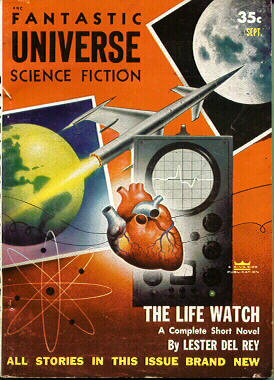
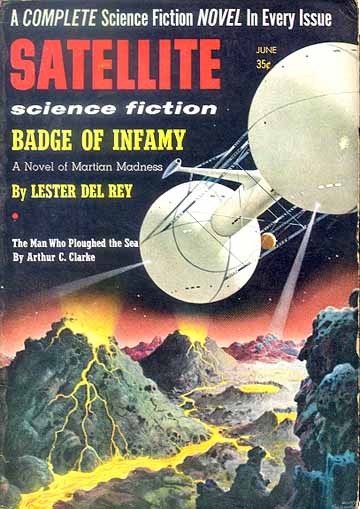
2.3. Editorial Career
After attending the 1947 Worldcon, Lester del Rey met Scott Meredith and subsequently began working as a first reader for the newly established Scott Meredith Literary Agency, where he also served as an office manager.
He later transitioned into an editing role for various pulp magazines and then for book publishers. Between 1952 and 1953, del Rey edited several magazines, including Space SF, Fantasy Fiction, Science Fiction Adventures (under the pseudonym Philip St. John), Rocket Stories (as Wade Kaempfert), and Fantasy Fiction (as Cameron Hall). He also oversaw the "Best Science Fiction Stories of the Year" series from 1972 to 1976.
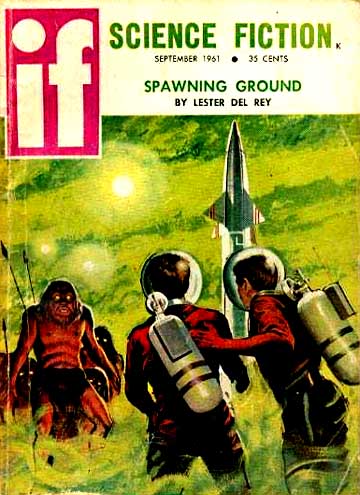
His most significant success as an editor came when he partnered with his fourth wife, Judy-Lynn del Rey, at Ballantine Books. Together, they established Del Rey Books in 1977, a dedicated imprint for fantasy and science fiction within Ballantine Books (which later became part of Random House). His editorial approach was notably more conservative compared to contemporaries like Judith Merril or Donald A. Wollheim. Del Rey retired from the publishing house in February 1992.
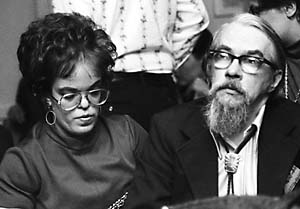
2.4. Death
Lester del Rey passed away on May 10, 1993, at New York Hospital at the age of 77, following a brief illness.
3. Style and Views
Lester del Rey possessed a distinctive literary style and held strong, often controversial, philosophical stances regarding the science fiction genre and its place within literary criticism.
3.1. Literary Style
Critics have consistently highlighted Lester del Rey's approach to storytelling. Algis Budrys, writing in 1965, remarked, "There is no writer in this field who is more steadfast in practicing the rule that fiction is first of all entertainment." Budrys observed that del Rey's stories, even in a collection spanning different periods, defied dating, a testament to his consistent individual voice. He noted that del Rey remained a successful writer because "del Rey has remained his own individual... he writes for himself, and his readers."
Budrys further described the typical del Rey character as "an individual who is trying to do the decent thing to the best of his ability." The core conflict in a del Rey story, according to Budrys, often involved "a good and faithful being trying to understand a complex situation which prevents his immediately knowing the decent thing to do." Even when his stories employed a "trick" ending, it was typically characterized by a mood of sorrow rather than shock, and the payoff was not the irrevocable destruction of a personality. Instead, readers would realize "that even a decent individual must pay the price of ignorance." Critically, del Rey often left room for his protagonists to grow and move forward, allowing even his "worst losers" to retrieve something, often described as dignity.
3.2. Views on Science Fiction Criticism
Lester del Rey held controversial opinions on academic criticism of science fiction. In 1957, he co-edited a small amateur magazine called Science Fiction Forum with Damon Knight. During a debate within the magazine regarding symbolism in literature, del Rey famously accepted Knight's challenge to write an analysis of the James Blish story "Common Time" that would demonstrate the story was simply about a man eating a ham sandwich. This incident underscored his pragmatic and often dismissive view of overly intellectualized literary analysis when applied to science fiction.
As science fiction gained greater academic respectability and began to be taught in classrooms, del Rey expressed his strong disapproval, stating that academics interested in the genre should "get out of my ghetto." He firmly believed that for science fiction to develop, it had to separate itself from mainstream critics who evaluated it based on conventional literary values. Del Rey argued that if science fiction were confined to mainstream perspectives, it would never have enjoyed the freedom to make the choices it did, even if many of those choices were perceived as "wrong," because they were "necessary for its development."
Starting in September 1969, del Rey wrote the "Reading Room" review column for If. After If ceased publication in 1974, he continued his review column, titled "The Reference Library," for Analog Science Fiction and Fact.
4. Awards
Lester del Rey received several significant literary awards and honors throughout his career, recognizing his extensive contributions to the science fiction and fantasy genres.
- In 1972, he was awarded the E. E. Smith Memorial Award for Imaginative Fiction, commonly known as the "Skylark," by the New England Science Fiction Association. This award recognized his significant contributions to science fiction, both through his direct work in the field and by embodying the personal qualities that characterized "Doc" Smith.
- In 1985, he received a special Balrog Award for his contributions to the fantasy genre. This honor was determined by a fan vote and organized by Locus magazine.
- In 1990, the Science Fiction Writers of America (SFWA) named him its 11th SFWA Grand Master. The award was presented in 1991, acknowledging his lifetime achievements in science fiction and fantasy.
5. Legacy and Influence
Lester del Rey left an indelible mark on the landscape of science fiction and fantasy literature, profoundly influencing both its publishing trends and its self-perception. His presence also extended into popular culture, serving as inspiration for fictional characters.
5.1. Impact on Literature
Del Rey's most enduring contribution to literature came through his role in the establishment of Del Rey Books in 1977. Co-founded with his wife, Judy-Lynn del Rey, this imprint at Ballantine Books became a major force in the publication of science fiction and fantasy, shaping the commercial viability and aesthetic direction of these genres for decades. His advocacy for the unique and independent development of science fiction, separate from mainstream literary evaluation, played a crucial role in shaping the genre's self-perception and encouraging its distinct evolution. His firm stance on allowing the genre the "freedom to make the choices it did" influenced how authors and publishers approached the genre, allowing for continued experimentation and growth outside conventional literary norms.
5.2. Portrayal in Popular Culture
Lester del Rey was a member of a real-life literary banqueting club in New York, the Trap Door Spiders. This club served as the inspiration for Isaac Asimov's fictional group of mystery solvers, the Black Widowers. In Asimov's popular mystery series, the character of Emmanuel Rubin, a writer, was directly modeled after Lester del Rey.
6. Bibliography
Lester del Rey was a prolific author and editor, contributing numerous works across various forms of literature within and beyond the science fiction and fantasy genres.
6.1. Novels
- Marooned on Mars (1952)
- Rocket Jockey as Philip St. John (1952)
- A Pirate Flag for Monterey (1952)
- Attack from Atlantis (1953)
- Battle on Mercury as Erik Van Lhin (1953)
- The Mysterious Planet as Kenneth Wright (1953)
- Rockets to Nowhere as Philip St. John (1954)
- Step to the Stars (1954)
- For I Am a Jealous People (1954)
- Preferred Risk (1955) with Frederik Pohl [as by Edson McCann]
- Mission to the Moon (1956)
- Nerves (1956) [Expansion of 1942 novella; revised in 1976]
- Police Your Planet as Erik Van Lhin (1956)
- Day of the Giants (1959)
- Moon of Mutiny (1961)
- The Eleventh Commandment (1962)
- Outpost of Jupiter (1963)
- The Sky Is Falling (1963)
- Badge of Infamy (1963)
- The Runaway Robot (1965) [ghost-written by Paul W. Fairman]]
- The Infinite Worlds of Maybe (1966) [ghost-written by Paul W. Fairman]
- Rocket from Infinity (1966) [ghost-written by Paul W. Fairman]
- The Scheme of Things (1966) [ghost-written by Paul W. Fairman]
- Siege Perilous (1966) [ghost-written by Paul W. Fairman]
- Tunnel Through Time (1966) [ghost-written by Paul W. Fairman]
- Prisoners of Space (1968) [ghost-written by Paul W. Fairman]
- Pstalemate / Psi (1971)
- Weeping May Tarry (1978) with Raymond F. Jones
6.2. Short Fiction Collections
- ... And Some Were Human (1948)
- Robots and Changelings (1957)
- The Sky Is Falling and Badge of Infamy (1966)
- Mortals and Monsters (1965)
- Gods and Golems (1973)
- The Early del Rey (1975)
- The Early del Rey: Vol 1 (1976)
- The Early del Rey: Vol 2 (1976)
- The Best of Lester del Rey (1978)
- War and Space (2009)
- Robots and Magic (2010)
6.3. Nonfiction
- Rockets Through Space (1957)
- Space Flight (1958, 1957; 1959)
- The Mysterious Earth (1960)
- The Mysterious Sea (1961)
- Rocks and What They Tell Us (1961)
- The Mysterious Sky (1964)
- The World of Science Fiction, 1926-1976: the History of a Subculture (1980)
6.4. As Editor
- The Year After Tomorrow with Carl Carmer & Cecile Matschat (1954)
- Best Science Fiction of the Year #1-5 (1972-1976)